
Two day whole-wheat desem + Hybrid sandwich loaf
I am awake far earlier than I would like to be. As I start to write this it is still dark outside and the cool air carries the feint song of only the earliest of the early birds. I too am an early bird. Yesterday was my final day at work so I am still a mix of emotions. Feelings of relief, apprehension, sadness, excitement and plain old scared stiff flood over me with little notice and catch me completely unaware … but enough about this … from change comes opportunity. Everything will work out!
To take some time to recuperate Nat and I are about to enjoy a small break from the rat race and plan to spend it lazing by a pool and walking on beaches at sunset. It has been so long since we have had any kind of real holiday it may take us a day or two to remember how to relax.
Before we head away I like to make sure we have a few loaves stocked in the freezer to make the transition from holiday bliss back to reality a little easier—something wholesome to return home to. The whole-wheat 'desem' (100% whole-wheat sourdough) I baked this week was inspired from a few different sources and incorporates some new processes for me.
Janet Cook and I often discuss our desem starter maintenance and one of the techniques that Janet uses with her whole-grain baking is retarding the dough during bulk fermentation. Now I have always been a bit of a 'retarding shaped loaves' kind of guy as I am normally a bit of a control freak during a dough's bulk ferment period, so it was going to be a big step for me to change this habit.
The push to try this new method came with some email correspondence I had with Dave Miller of Miller's Bakehouse regarding the schedule he uses with his whole-grain baking. Dave bakes with freshly milled flour and uses it when 'it's wriggling with life' so I was curious how he incorporated this into his schedule. The answer is by utilising a long cold bulk ferment. This way Dave can split the bake over two days. The first day is spent milling and mixing and the second is shaping and baking. A highly hydrated dough that is kept cool also makes shaping easier and the final proofing is less likely to run away from him on warmer days.
So I formulated my timelines and set about tempering some biodynamic wheat grains from Four Leaf Milling. Just a word of warning to those who want to temper their wheat in a plastic tub by shaking around the added water. HOLD THE LID ON TIGHT! … dear oh dear, I am still finding wheat grains in corners of our kitchen from a little tempering accident that may have occurred.
I milled the flour in one pass with a slightly coarser setting than I normally use, all the while stirring the new flour to cool it as quickly as possible. I then set about mixing. Since I was going to use a long cold bulk ferment I couldn't see any benefit using a extended autolyse so I kept that within an hour before I added the desem starter and mixed the dough thoroughly. I allowed the dough an hour on the bench before giving it a stretch-and-fold and placing it in the fridge overnight for 12 hours.
One part of this I have neglected to mention so far is the starter builds. I am using the same time and temperatures for the starter builds as in my previous miche bake. Namely two very short warm builds—the starter was doubling in three hours.
Two day whole-wheat desem (4 x 1000g)
Formula
Overview | Weight | % |
Total dough weight | 4000g |
|
Total flour | 2222g | 100% |
Total water | 1778g | 80% |
Total salt | 40g | 1.8% |
Prefermented flour | 222g | 10% |
|
|
|
Final desem starter build – 3 hrs 25-26°C |
|
|
Starter | 85g | 50% |
Freshly milled organic wheat flour | 170g | 100% |
Water | 107g | 63% |
|
|
|
Final dough - 25°C |
|
|
Desem starter | 362g | 18% |
Freshly milled organic wheat flour | 2000g | 100% |
Water | 1638g | 81% |
Salt | 40g | 2% |
Method
- Mix final desem starter and leave to ferment for 3 hours at 26°C
- Mill flour and allow to cool to room temperature before mixing with water (hold back 100 grams of water) and autolyse for a one hour.
- Add starter to autolyse then knead (French fold) 5 mins. Return the dough to a bowl and add salt and remaining 100 grams of water and squeeze through bread to incorporate (dough will separate then come back together smoothly) then knead a further 10 mins.
- Bulk ferment for one hour at room temperature. Stretch-and-fold after one hour and place in a fridge at 4°C for 12 hours.
- Remove from fridge and allow an hour at room temperature.
- Divide. Preshape. Bench rest 30 mins. Shape.
- Final proof was for 1.5 hours at 24°C
- Bake in a preheated oven at 250°C for 10 mins with steam then reduce temperature to 200°C and bake for a further 30 mins.
I won't lie to you, I was a little apprehensive about what state I would find the dough in the following morning. But during the night the dough had developed nicely and had not skinned or over-proofed. The dough then spent some time on the kitchen bench while we enjoyed our breakfast. Shaping the cool dough was effortless and it wasn't to long before it was ready for baking.
The first thing I was surprised about was the sweetness to this bread. I had imagined that after an extended fermentation albeit at cool temperatures, that the bread would have had more unwanted tang than was present. This was a revelation to me. The second thing I noticed was the warm caramel flavours in the crust. The bread was packed with deep full flavours. The coarse flour inhibited the crumb a little but it was not gummy or heavy. Perfect for morning toast or a bed for scrambled eggs.
Fresh flour hybrid sandwich loaf = Fail
I have spent some time reading Owen Simmons 'Book of bread' and have enjoyed learning about the intricacies of the English and Scottish bread traditions. So much so that I have been experimenting with the idea of a hybrid sandwich loaf. I have a picture in my mind of a soft yeasted high top bread with the added complexity of some sourdough. After some tasty success using white flour I tried a version using freshly milled flour sifted down to a creamy soft colour … and made some of the yuckiest, awful bread I have made in a long, long time :)
I didn't like the flavour, the texture, the crumb or the aroma. I am still trying to piece together how a yeasted straight dough with a small amount of added sourdough using a short process created such a foul beast of a loaf. The final loaf looks great, and the dough felt really nice but when it came time to slice I could tell the rubbery crumb was not going to be pleasant eating. Sour, chewy and rubbery. A completely different bread to a version I made earlier in the week using white flour. Perhaps I am just to accustomed to eating highly flavoured french style hearth breads using high extraction flours and was disappointed with this. I am still unsure, but at least it will be good enough for toast.
Anyhow, I have bags to fill, chores to finish and a car to pack. I'll see you all in a few days!
Cheers,
Phil
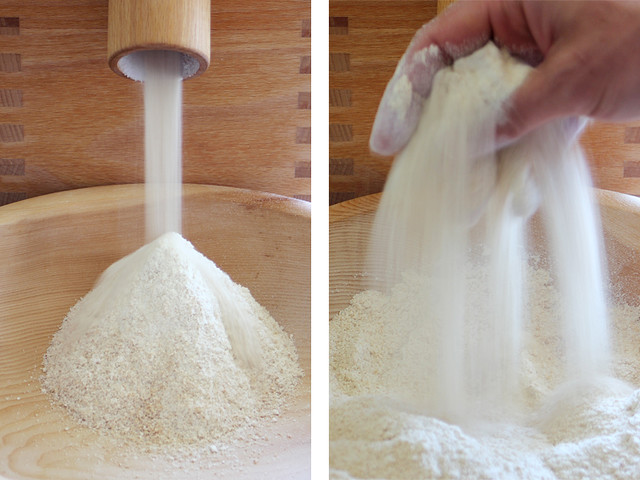
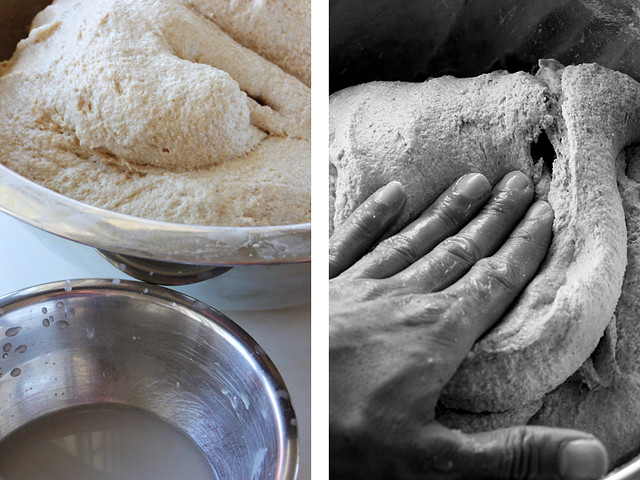
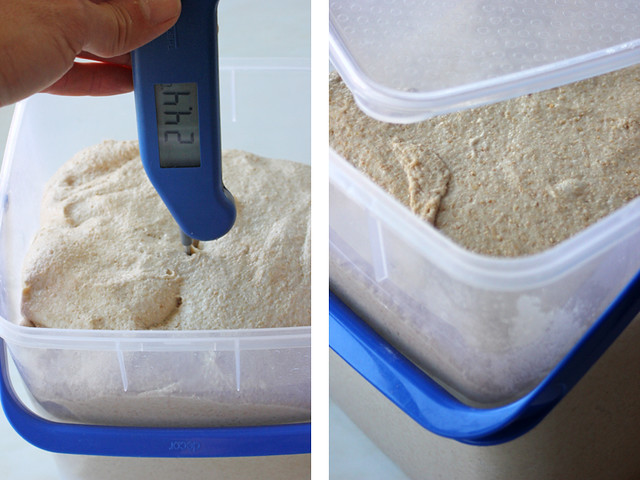
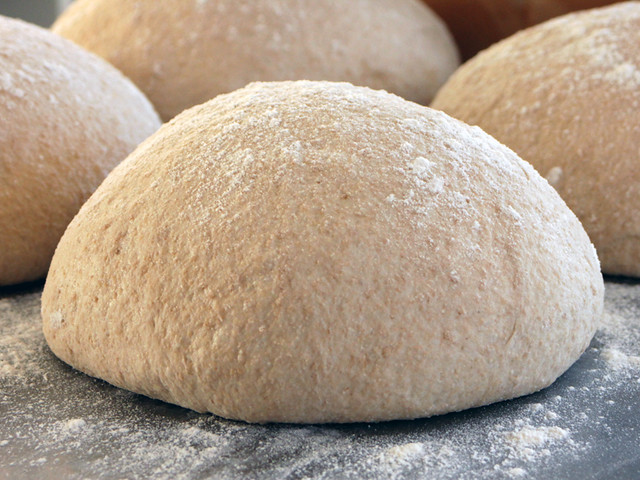

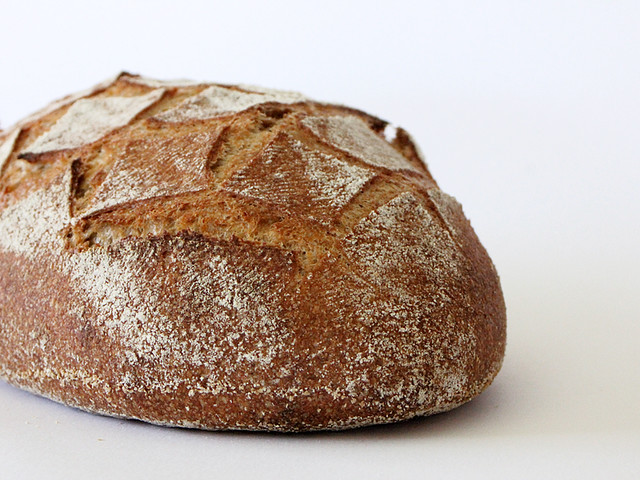


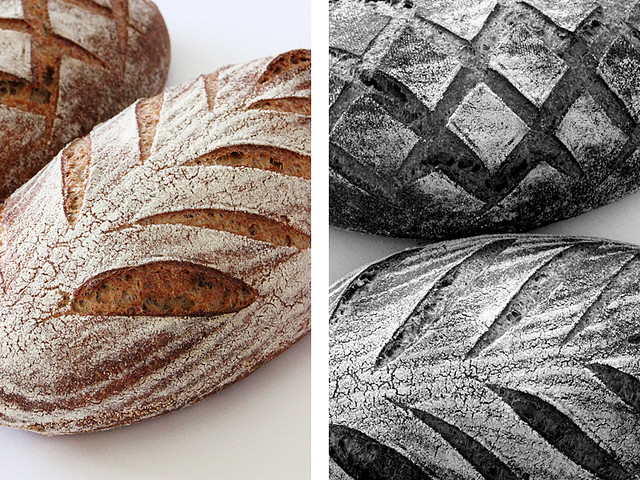

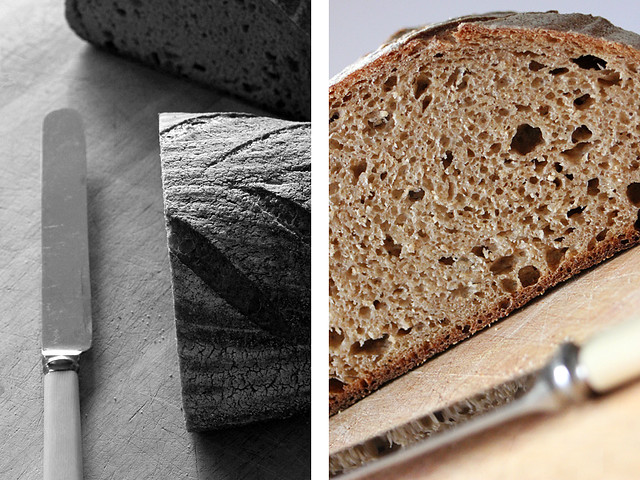



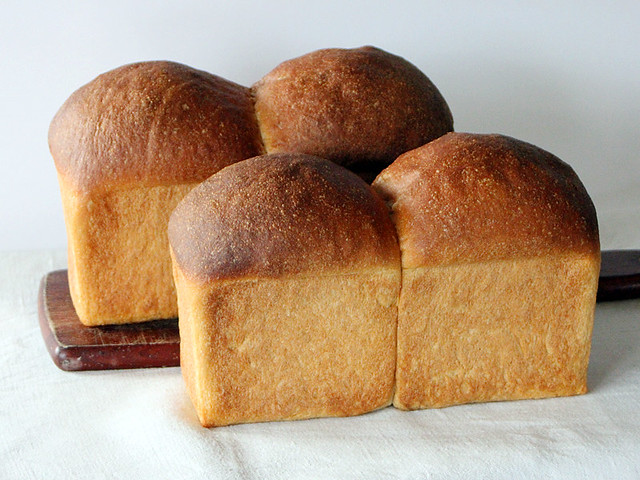
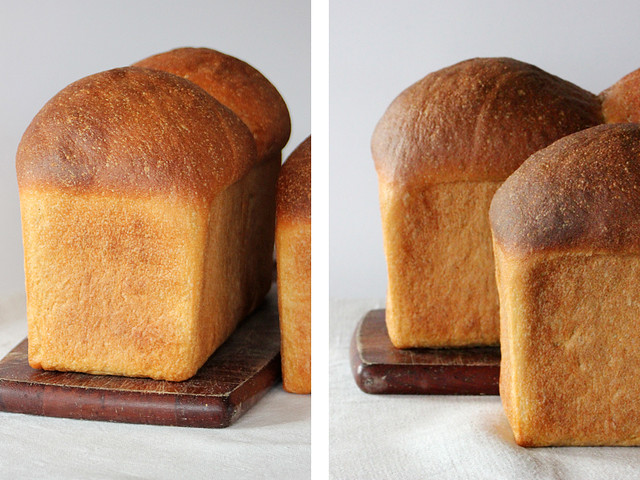
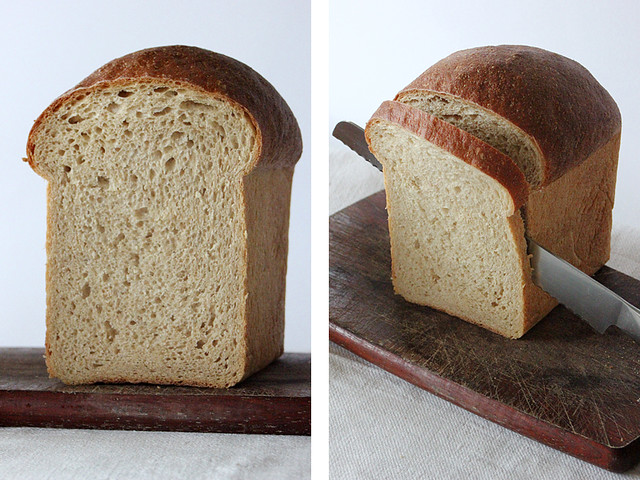
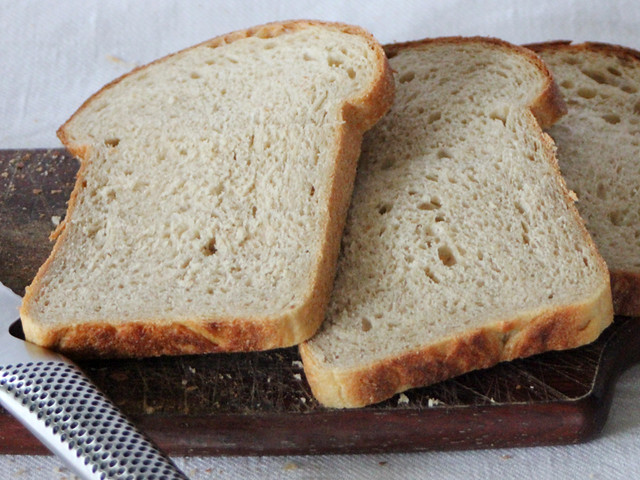


Comments
certainly looks good. I will have to try your desem starter bread which looks (if that makes sense) extremely flavorful. Thanks for the very clear instructions. I used your tips to set my mill to very fine and got a completely different flour. Can you sift after milling fine or do you have to mill coarse, sift, and then mill fine? Don't answer that. You have a vacation to go on. Hope you have a wonderful time and best of luck in figuring out the next thing. -Varda
Hi Varda,
I usually do one of two methods ... I mill very fine in one pass and then sift through a 30" sieve once - this gives me a pretty rough 80-85% extraction flour. Still quite dark but a lot softer than whole-wheat. The other method involves tempering the grain beforehand, then doing multiple passes through the mill starting coarse and then progressively finer. Each of these passes is sieved through multiple screens. It takes me about an hour but I get a very different flour - soft and creamy coloured. I have been favouring the first method of late.
cheers,
Phil
Hi Phil, Thanks for your answer. One question: Do you remill the stuff that ends up in the sieve or the flour that goes through? I have been working through a few things - tempering, sifting, milling, remilling, and haven't yet figured out howbest to do this. -Varda
Hi Varda,
Both really ... I have a 50" sieve ... nothing that gets through that ever gets remilled. But it depends what kind of flour I am aiming for .... for the darker 85% extraction I don't bother remilling anything ... but if I want a lighter flour I will start coarse and put that through three sieves. This way I get coarse bran in one sieve, smaller bran and middlings in another and what looks like a semolina in the last. I then repeat this process by remilling everything the sieves caught, but this time on a finer setting ... I may do this three or four times depending how well the tempering went.
Pat and Bill Wraith have much better explanations on this process than what I can hope to muster ... I am still scratching the surface of what's possible.
I have read some of Pat's stuff and some of Bill Wraith and learned a lot from both but I'm still trying to sort this out. Thanks so much for your detailed answer. -Varda
my successes :-) Sorry it tasted less than it looked. Love your 100% Desem WW bread and the crust and crumb are gorgeous. I'm not a big 100% WW fan but do like it with some spelt and rye as a multi-grain to round it out.
Have a nice vacation and
Cheers!
Thanks DA,
I tend not to add other grains to the desem .... maybe spelt at a push ... I like to add rye and spelt to a sifted wheat flour ... I think they get lost otherwise.
The short trip away was lovely ... perfect weather!
Cheers,
Phil
Love the desem loaf. I just got some fresh wheat flour, will have to try your formula!
Using that same fresh wheat flour I also made a 100%ww sandwich loaf and didn't like it. My issue was that the texture was too crumbly probably because the flour is low in gluten. Oh well, gotta keep experimenting.
Looking forward to seeing your experiments with the fresh wheat flour. There are some interesting articles floating around the web relating to baking with low protein whole-wheat flours.
Cheers,
Phil
What's this? Phil has a "Fail" and txfarmer bakes a loaf she "didn't like"? Dude, Sandy was a bigger storm than I thought.
The desem looks lovely (as does the "Fail" for that matter) and the imaging is, as always, as tasty as those loaves must be.
Safe and satisfying travels, Phil. Thanks for more inspiration.
Tom
Thanks Tom,
Well the 'fail' is just acceptable as toast ... and what remains shall become breadcrumbs ... so not all is lost :)
Cheers,
Phil
Hi Phil,
Glad to know you are getting a chance to get away for awhile. A break between the known and unknown....One might say a buffer of sorts.
It is apparant that you suffer from CBS (Khalid's term) by your comment about making sure you have 'fresh' bread in the freezer to come home to.....how many people do you know who would think of something like that :-) ( people here and other bakers excluded)
So glad you gave bulk fermenting a shot and I am even more excited to know that you were surprised and really liked the results. Lets me know I am on the right track which is hard to know when I can't taste to find out what effects my methods are getting....but I know you do taste and I know you are using flours very similar to mine....I really am sooo excited you did this AND liked the results!
Is this formula the same as your other desem you posted here maybe a year ago? I am thinking you used way less leaven. Was that due to the temps. you are having now? (I generally use 15% pre fermented flour at 65-70% which works out to the leaven being 26% of the total formula. In summer months I drop the 15% down to 13%....haven't tried lower but now I am thinking......dangerous thing to do :-)
(Because of the overnight bulk I skip a 'true' autolyze and mix my leaven, flour and water together and let them all sit for about an hour too. Helps a lot with gluten development and with lean doughs the gluten really develops quickly! Enriched doughs still require a bit more kneading. When the temps are warmer here I include the salt in that first mix too to stall the fermenting of the dough.)
Love the scoring on your loaves. How do you shape your batards? I still can not find a consistent way to shape the dough so I end up trashing it and going to a boule by default...
Thanks for sharing here as usual. Love the photos and the story - especially about your tempering mishap....
Take Care,
Janet
Hi Janet,
Since Phil is on vacation, I'm so glad for him, maybe you could answer a question about his previous blog. He mentions sifting his flour. Does this only apply to freshly milled flours. I want to bake his spelt loaf, but have only normal American flours. Should they be sifted?
Thanks
Ml,
I will hazard a guess but I need to let you know that I have only ever baked with freshly ground grains so what I say is based on no practical experience with store bought flours at all :-)
I would guess that you do not have to sift with store bought flours but you will have to adjust his hydration level down a bit as freshly milled grains are a bit thirstier that store bought flours are and spelt isn't as thirsty as most flours.
Good Luck. In my opinion his formulas are all top notch.
Janet
Hi Janet,
Definitely CBS here! No argument at all!
As the temperatures are pretty warm here I have dropped the prefermented flour I use down to 10% ... also I was a bit nervous about the overnight bulk in the fridge so I wanted the dough to take its time. I was pretty happy with where it was the following morning so the amount seems right for the current temperatures.
I have a few methods for shaping batards up my sleeve but the one I use most is from the King Arthur video - http://youtu.be/PmxDKuGLWuE
Yep, I think I will keep experimenting with retarding the desem during bulk .... Thanks Janet :)
Cheers,
Phil
Thanks for the link. I had forgotten about those videos....
Janet
OK, that one made me smile. Well, when you did it, at least - not so much when I did it.
I now use a container with a locking snap on top for tempering...
Happy Milling!
Yeah, I wasn't smiling much at the time when I did it either ... what a mess ... And I just loved how the grain just seemed to pour all over the floor in slow motion ... sigh
Just been milling for some shortcrust pastry :) ... happy milling indeed!
cheers,
phil
Hope you enjoy your vacation Phil. I know how stressful the job switching thing can be. I have not slept very will myself as I mentioned previously I'm being forced to move on from my current job very soon.
Anyway...I'm glad you enjoyed your experiment with an overnight bulk fermenation. This is the method I use most of the time and I find it works great for most of my breads.
Sorry your other bread did not come out the way you envisioned. I know all of us share your pain as we have all had similar incidents but usually mine don't look as nice as your failure. I find sometimes it's good to have a failure so the next time you are more determined to adjust the formula and it's even more satisfying when it comes out the way you want.
Regards,
Ian
Thanks Ian,
I think the constantly waking early and 'stressing' has been the hardest part for me ... I hope you are finding a way forward through it.
How did you go with the wild weather? I have only really seen snippets over here ...
Over the years I have produced some awesome 'duds' ... woeful ... but it's really the best way to learn :)
Cheers,
Phil
I was very lucky and only lost power for a couple of days and lost a couple of fence posts. My Mom had 4' of water in her house and had to gut the inside of her den. Other people on Long Island, New York City area and New Jersey lost their houses and one town caught fire and over 130 houses burned to the ground. It's been pretty surreal the last week or so and the weather is now turning cold with still 200,000 people on Long Island alone without electric.
On a personal note I had a real good interview yesterday so hopefully I will get some good news soon.
Regards,
Ian
That's great news on the interview ... good luck!
It does sound surreal over there ... probably even more so with all the electioneering that's going on.
Our thoughts are with you guys ...
Cheers,
Phil
to the club of gummy-bread eaters and haters, Phil. There's not a single mouhthfeel that I hate most than rubbery bread, I find it even worse than the worst mouthfeel I could imagine. I guess it's what many call "chewey". Sometimes I get that terrible crumb, too.
Fortunately you had the very beautiful wholemeal loaf:)
Nico
Thanks for invitation to the club Nico :)
Thank goodness it is passable as toast :)
The desem loaf is just beautiful to eat ... wholesome!
Cheers,
Phil
I hope that you have had some relief during your vacation, and that you'll be able to brave through those stressful times and find a better job.
What a lovely desem bread, Phil! I'm now determined to creat a desem starter. Can i convert my white one to desem by feeding it whole wheat flour, and refrigerating it between feedings? Or do i have create one from scratch? As to the "fail" bread, it looks much better than any mediocre bread i've seen!
All the best to you, and yours,
Thanks Khalid,
Our tiny holiday was really enjoyable ... just perfect. You could convert some white starter into a desem by how you describe. It will take a few feedings to develop its characteristics ... but since you are milling your own flour it shouldn't take too long.
The 'fail' bread looked the part ... if only you knew the dark gummy secrets it helds within :)
Cheers,
Phil